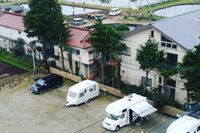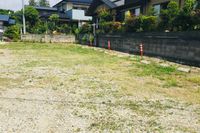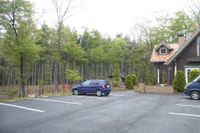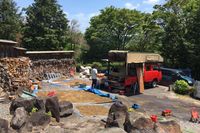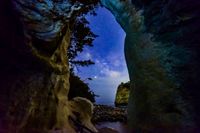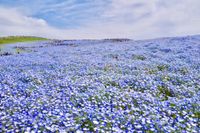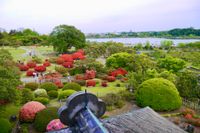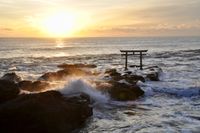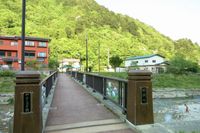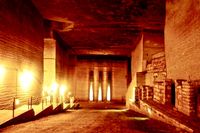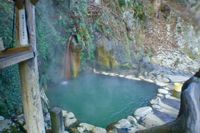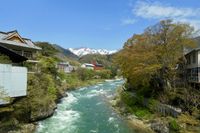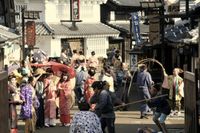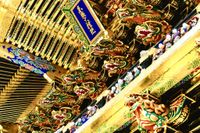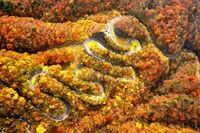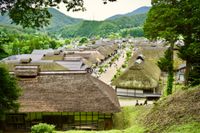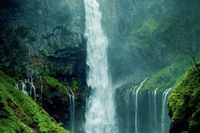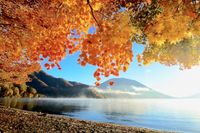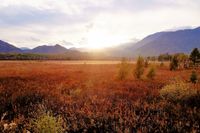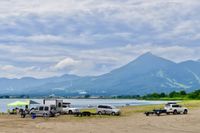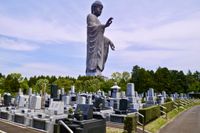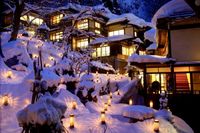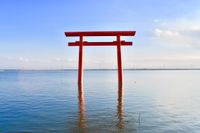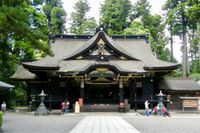Fukuroda Falls
茨城県/久慈郡大子町

Description
This is one of Japan's largest waterfalls in Ibaraki prefecture, boasting a height of 120m. A priest named Saigyo is said to have stated that "one cannot fully appreciate this waterfall unless you visit it in all four seasons", and it is for this reason that it is known as the "four time waterfall".
Homepage
Address
Nearby Car Night Spots
Nearby Activities
There is no nearby activities
Ranking Stations
(Bonfire BBQ) Chita Mihama Noma Beach Station
¥3,500〜
/ per nightAichi Noma, Mihamacho, Chita County
4.7
(42)Vanlife BASE | 45 min. from Narita Airport / Perfect for campervan travel/A seaside town rich in nature/Japanese countryside town/welcome traveler
¥7,000〜
/ per nightChiba Koseki, Kujukuri-machi, Sambu-gun
5.0
(61)Shin Meishin Suzuka PA (inbound) RV Station Suzuka * With Power!
¥2,200〜
/ per nightMie Yamamotocho, Suzuka-shi
4.3
(156)Nearby Drive Spots
Takado Beach
This is an extremely scenic area with areas of natural beauty such as the blue of the water and the sea, the pine greenery extending along the cliff, the shining white sand of the beach with two small beach coves. The area has attracted numerous people of culture such as Yokoyama TaikanOkakura Tenshin and Nogushi Ujyo. The night starscape is also something to behold. ※高戸小浜海岸 © IKEMON750 クリエイティブコモンズライセンス(表示4.0 国際)https://creativecommons.org/licenses/by/4.0/
Hitachi Seaside Park
This is Japan's largest beachside park at 350 hectares - seven times the size of Tokyo Disneyland. April is the season of the daffodils and tulips, with May being the season of the baby blue eyes flower, in August, the "Rock in Japan festival" is held here, and the area is particularly busy in October, with the Bassia Scoparia herb season.
Kairakuen Garden
This is one of Japan's 3 most famous gardens, opened by Tokugawa Nariaki, of the Tokugawa clan, in 1842. He had a great love for the people and built it with the idea of people from all walks of life to have fun together. There are also around 3,000 plum trees of around 100 different varieties. Various festivals are held here throughout the year, such as the main plum festival in March, the cherry blossom festival in April, the Azalea festival in May, the Mito Komon festival in August, and the Hagi festival in September.
Oarai Isosaki Shrine
It is said that in 856 AD, a God appeared in front of Oarai and this temple was created. The temple contains Okuninushi(a main powerful god) as well as Sukunahiko(a secondary God). The Torii in the area are famous, and the area is known as an area where the Gods descend from heaven. The area is also a setting for the Anime "Girls und Panzer", and so is popular as a "pilgrimage" trip for fans of the anime.
Itamuro Onsen
This is an old bath house in Nasu Shiobara City. The bath house has over 1000 years of history and was famous for being known as the "Healing water of Shimotsuke". It became known as a "Rope bath" due to the unique way of entering by holding onto a rope, but was also known as the "cane no longer needed" bath due to its reputation for being so healing on the joints that old people who needed a cane to walk no longer needed it after being healed by the bath.
Oya History Museum
This is a huge underground area of around 20,000 meters squared which was formed by digging the area for 70 years between 1919 and 1986. During the war, it was used as an underground factory, and as a place for rice storage post war. Nowadays, it is often used as a setting for filming dramas, as well as a stage for concert performances.
Shiobara Onsen
These are old fashioned baths in Nasu Shiobara City. The name comes from the 11 bath houses that are along the river. The area originally was called the 11 baths of Shiobara, and boasts more than 1,000 years of history as an Onsen town. The area is unique in the sense that there are several unstaffed onsen, and is popular for viewing the snow and winter landscapes while enjoying a warm onsen bath.※Credit:旅と温泉の無料写真素材 おんふぉと http://on-photo.com/
Kinugawa Onsen
This is an onsen on the upper stream of Kinugawa River in Nikko. At that time, the baths were exclusively used for Daimyo(Japanese feudal lord) and Monks who went on pilgrimages to Nikko. The water is famously effective against burns, and in the nearby village, there are several souvenir shops, restaurants and other shops.
EDO WONDERLAND Nikko Edomura
This is the country's largest Edo era(1603-1868) theme park, opened in 1986. Inside there are recreated Edo-style villages and Edo era experiences such as Ninja actors and Geisha actress in the style of the time. Visitors can also rent a wide range of Edo era style clothing to truly give that experience of travelling back in time.
Nikko Toshogu Shrine
This is a shrine that was built in 1617 and is registered as a world heritage site. After the death of Tokugawa Ieyasu, the Tokugawa family was enshrined here. The shrine is also famous for the Yomei-mon Gate, with vivid sculpturing and colors, as well as the "3 monkeys" and "sleeping cat" statues that were built to pray for peace by the Ieyasu. Minamoto Yoritomo and Toyotomi Hideyoshi were also enshrined in this temple.
Irohazaka Route
This is a hilly road (number 120) which has 48 turns - the same number of characters in the Iroha song. The first and second parts are separated by a hill, where there are two resting spots - Kurokami-daira and Akechi-daira where one can view Kegon Falls and Lake Chuzenji. The road is famous for appearing in the Japanese arcade game Initial D.
Ouchi-juku
This is a area in southern Aizu which is an Edo-era(1603-1868) village which is "half agricultural, half residential". There are numerous thatched roof traditional houses which give the feeling of having travelled back in time to the Edo era. There is also a specialist "Spring onion Soba" shop where one uses spring onions to eat soba instead of chopsticks.
Kegon Falls
This is one of Japan's largest waterfalls in Nikko City. The 97 meter waterfall drop is quite spectacular, and visitors can view it relatively up close. The waterfall was discovered by a priest named Shodo and the name comes from buddhist scripture.
Lake Chuzenji
This is a lake formed by the eruption of Mount Nantai 20,000 years ago, inside Nikko National Park. A priest named Shodo, discovered the area, and was originally used as a training ground based on faith and worship in Buddhism. The area is particularly popular in autumn due to the autumn leaves that appear here.
Senjyo Gahara
This is a 400 hectare high marshfield area within Nikko National Park. The name comes from the fact that two mountain Gods, Futaaranokami (from Mount Nantai) and Akaginokami (From Mount Akagi) battled a large snake and large centipede respectively. As there is nature abound, the area is also particularly suitable for hiking.
Lake Inawashiro
This is Japan's fourth largest lake, situated in central Fukushima. The place is home to swans and swallowtail birds which are designated national treasures. There is a large camping area here, with Mount Bandai in the background, where visitors can enjoy various marine activities such as water boarding and water skiing.
Ushiku Daibutsu
This is a buddha statue of Jodo Shinshu Hongganji sect opened in 1989 by Otani Kosho. At 120 meters tall, it is the tallest buddha statue in Japan, and the third tallest in the world, as per the Guinness World Record. Inside on the 1st to 5th floors, there are several exhibitions about the history of Buddhism as well as interactive exhibitions. There is also an observation deck at the top. Visitors can experience the natural life around them with the seasonal flora and fauna in the surrounding area.
Higashiyama Onsen
This is an old bath house in Aizu-Wakamatsu city. It has 1,300 years of history, and developed as an inner parlour house of the city during the Edo area(1603-1868). The place is famous as an area where the Vice President of Shinsengumi, Hijikata Toshizo healed wounded soldiers during the war. Geisha are still active around the town today.※Credit:旅と温泉の無料写真素材 おんふぉと http://on-photo.com/
Kashima Jingu Shrine
This is a Shinto shrine that is said to have been built by Emperor Jinmu of the around 660 BC. The deity of the shrine is Takemikazuchi(a thunder god), revered as a warrior during the successive samurai regimes such as Minamoto Yoritomo and Ashikaga Takauji. In addition to the "Futsunomitama no Tsurugi", a holy sword which is a designated cultural asset, it is a shrine full of other amazing sights, such as a torii gate that appears to float in the river, Mitarai pond, and around 30 deer in the park, which are said to be underlings of the Shrine God.
Katori Jingu Shrine
It is a Shinto shrine that is said to have been built by the emperor of the first generation Jinmu around 650 BC. It is the main shrine of Katori Shrine group, of which there are 400 nationwide. The shrine God "Futsunushi no Kami" was revered as a warrior during the successive samurai regimes of Minamoto Yoritomo and Ashikaga Takauji, amongst others. Even these days, the shrine remains a place of worship and reverence for martial artists, and there are numerous cultural treasures here, such as the Kaijubudokyo, a sort of ancient medallion with imagery of marine creatures.

